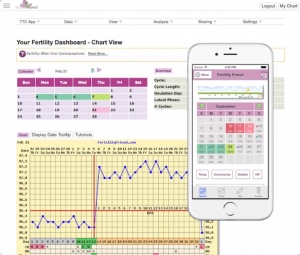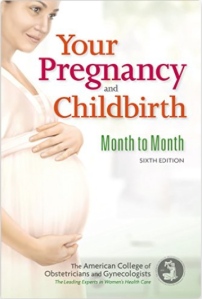 Becoming pregnant can be fun, happy, exciting, or sometimes unplanned. Knowing how it happens is very useful information to make it easier to achieve when desired, and to be avoided if that is the goal.
Becoming pregnant can be fun, happy, exciting, or sometimes unplanned. Knowing how it happens is very useful information to make it easier to achieve when desired, and to be avoided if that is the goal.
The average menstrual cycle lasts for 28 days and can range from 21 to 35 days. In an average cycle ovulation occurs on day 14. Signs may include a cramp in the lower abdomen or back, breast tenderness, increase in a clear vaginal discharge, or an increase in sexual desire.
 For pregnancy to happen, sperm must be present in the fallopian tubes and meet with an egg. When a man climaxes during sex millions of sperm go into the vagina and some can make their way through the cervical mucus and into the uterus and from there into the fallopian tubes. Sperm can live inside a woman’s body for 3 days or more, but an egg’s life is much shorter, only 1 day. So pregnancy can occur if an egg is already present when you have sex, or if you ovulate within a day or two after you have sex. This means that your fertility time is limited. You are fertile from 3-5 days before ovulation to 1 day after ovulation. Trying to time intercourse so that you have sex just before ovulation seems to be a good way of thinking about it. There is also a new theory that ovulation is not just a random event. Research has discovered a special protein in semen that can actually cause ovulation.
For pregnancy to happen, sperm must be present in the fallopian tubes and meet with an egg. When a man climaxes during sex millions of sperm go into the vagina and some can make their way through the cervical mucus and into the uterus and from there into the fallopian tubes. Sperm can live inside a woman’s body for 3 days or more, but an egg’s life is much shorter, only 1 day. So pregnancy can occur if an egg is already present when you have sex, or if you ovulate within a day or two after you have sex. This means that your fertility time is limited. You are fertile from 3-5 days before ovulation to 1 day after ovulation. Trying to time intercourse so that you have sex just before ovulation seems to be a good way of thinking about it. There is also a new theory that ovulation is not just a random event. Research has discovered a special protein in semen that can actually cause ovulation.
Knowing when you are fertile can be a challenge. There are different methods to predict it. For planning purposes, there are phone apps that can be helpful such as Fertility Friend or My Days. These apps calculate your expected next period and make predictions based upon it. The predictions are less accurate if your cycles are less regular. You can also go to the drug store and purchase an ovulation predictor test kit such as Ovutime or Ovutest. These urine tests indicate when the hormone LH becomes present. When LH rises in your circulation it causes ovulation and this hormone can be detected in your urine. When the ovulation test turns positive, this means you should have intercourse that day and the next day for best results. You may also notice changes in your cervical mucus where it becomes increased in amount and more clear and watery in quality. To promote pregnancy you should time intercourse to be daily or every other day when good quality cervical mucus is present. It should not be less often than every other day or more frequent than once a day for the best fertility results. You can also track your temperature with a special thermometer to measure your basal body temperature. Your temperature rises after you ovulate and stays up by a small amount for 2 weeks. This method is not that useful in that by the time you discover you have ovulated, it’s already too late for timing of sex.
You can start trying for pregnancy soon after you stop using a birth control method, but not too soon. If you are using the pill or a similar hormonal birth control method, it is a good idea to wait at least a month or two to allow your body to return to normal. If you get pregnant in the first cycle after stopping the pill you will have double the chance of having twins. While that may sound exciting, having one baby at a time is a much safer way to go, and much more manageable for taking care of children later on. We recommend stopping the birth control method, waiting 1-2 months before trying for pregnancy, and being on vitamins that contain iron, folic acid and DHA. In a given cycle the chance of success is only 20%, and it is normal to take months for pregnancy to happen. Do not be discouraged if it does not happen right away. With normal fertility you will become pregnant within 1 year, and 85% of couples will be successful in having this happen. 15% of couples will take longer than a year (that is called infertility), but only 1% of couples are unable to conceive. If you are trying for pregnancy and it seems to be taking too long, don’t worry about it. Sometimes you can be trying too hard for pregnancy. Increasing your anxiety about it is not helpful for fertility. Relaxing and having a good time is usually the best recipe for success.
First signs of pregnancy include feeling very tired, feeling nauseous, having breast tenderness, and your period being late. If you think you may be pregnant, doing a home test is helpful. If positive, these tests are usually reliable. If a test is negative it may be accurate or not. Sometimes the level of pregnancy hormone is elevated by too little to be detected by the urine method. If you really need to know (for example when a tubal pregnancy is suspected), then a blood test is much more reliable to detect an early pregnancy. Blood tests and ultrasound are also very helpful if you are bleeding and concerned about a possible miscarriage.
When you have a positive test, call us to make an appointment to come in and confirm your pregnancy. If you are at least six weeks and one day from the first day of your last period, we should be able to see the fetus and its heart beat by ultrasound. Once we see the fetal heartbeat the chance of successfully having a baby goes up to 85%! Then you are on your way to having a new life in your family. Good luck!
This article is partially based on information in ACOG’s book, Your Pregnancy and Childbirth, Month to Month.

Thank you very much for sharing this great information about sex for pregnancy. Me and my wife have finally decided to have a baby after 2 years of our marriage. I was looking out for any risks associated with it. This article did gave a great knowledge.